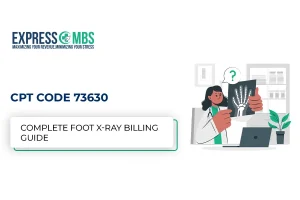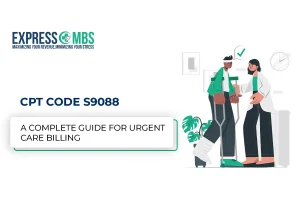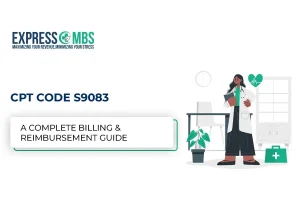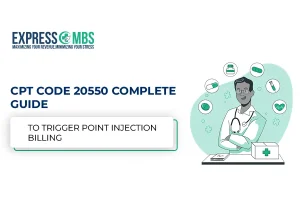
17110 CPT Code Guide – Easy Billing for Skin Lesion Removal

- 17110 CPT codes apply to destruction of 1–14 benign lesions.
- Global period = 10 days (follow-ups included).
- Use correct ICD-10 codes to establish medical necessity.
- Modifiers (-25, -59, -51) may be needed depending on the scenario.
- Misuse of 17110 (e.g., for mole or skin tag excision) often leads to denials.
For dermatology and primary care practices, 17110 CPT code is one of the most frequently used billing codes. Yet, it’s also one of the most miscoded and denied procedures.
Whether you’re a provider or billing manager, understanding CPT 17110, its global period, reimbursement, and modifiers is essential for avoiding denials and ensuring clean claims.
This 2025 guide breaks down the 17110 CPT code description, documentation rules, reimbursement insights, and coding best practices to help you maximize revenue.
What Is the 17110 CPT Code?
CPT code 17110 is defined as:
Removal of up to 1, 14 benign lesions (excluding skin tags and cutaneous vascular growths).
Key Details:
- Covers 1–14 benign lesions in a single session
- Methods include cryosurgery, electro surgery, chemosurgery, or similar
- Common conditions: warts, seborrheic keratosis, molluscum contagious
Do not use CPT 17110 for:
- Skin tag removal – Use 11200
- Mole excision – Use 11400–11446
- Excision of malignant lesions – Use 11600–11646
- 15+ lesions – Use 17111 CPT code
Why CPT 17110 Matters in Everyday Practice
From my time working with dermatology and internal medicine clinics, I’ve seen the 17110 CPT code frequently under coded or miscoded, resulting in claim denials or payment delays. Many providers confuse it with codes for skin tag removal or mole excision, such as:
- Skin tag removal CPT: 11200
- CPT code for mole excision: 11400–11446
- CPT code for excision of skin lesion: ranges from 11600 to 11646 (malignant lesions)
But 17110 is strictly for benign destruction—not excision or skin tags. Getting this wrong could affect compliance and payment.
CPT 17110 Description & Global Period
- 17110 CPT code description: Destruction of benign lesions, up to 14 lesions.
- Global period for 17110: 10 days
- Follow-ups related to the procedure are bundled.
- No extra payment for wound care or complication management during this period.
CPT 17110 Reimbursements (2025)
Reimbursement depends on payer and region.
- Medicare: ~$70–$90
- Private Payers: $80–$120
- RVU (Relative Value Units): ~1.18
Tip: Always pair with the correct ICD-10 covered diagnosis (e.g., B07.0 plantar wart, L82.1 inflamed seborrheic keratosis) for smoother claim approvals.
Modifier Use with 17110 CPT Code
Does CPT 17110 need a modifier? Sometimes.
- -59 – Distinct procedural service, when performed with other treatments
- -25 – Important, separately identifiable E/M service on same day
- -51 – Multiple procedures during the same encounter
Always check payer-specific rules before applying modifiers.
Documentation Requirements for 17110
Clean claims require detailed documentation. Include:
- Number and type of lesions treated
- Specific location(s)
- Method of destruction (e.g., cry therapy with liquid nitrogen)
- Reason for treatment (e.g., pain, bleeding, infection risk)
- Supporting ICD-10 diagnosis codes
17110 vs. 17111 CPT Code
Code | Lesions Treated | RVU | Used For |
17110 | 1–14 lesions | ~1.18 | Small treatment sessions |
17111 | 15+ lesions | ~1.47 | Extensive treatment |
Choosing the wrong code here can lead to underpayment or rejection—something we’ve seen frequently corrected at Express Medical Billing through denial management processes.
Real-Life Billing Tip
Scenario: A provider destroys 6 warts on a patient’s back using cryosurgery and also evaluates the patient for a rash during the same visit.
Correct Billing:
- 17110
- 99213-25 (Established patient office visit with modifier 25)
- Appropriate ICD-10 codes (e.g., B07.0 for warts, L30.9 for rash)
This ensures both services are paid—separately and correctly.
Conclusion
Correct use of CPT 17110 is vital for compliance and revenue cycle success. From documentation to modifiers, accuracy ensures you avoid denials and maximize reimbursement. Our team stays updated on CPT changes, payer rules, and credentials ethics so that you do not have to.
At Express Medical Billing, we specialize in dermatology and outpatient coding, helping providers reduce errors, stay compliant, and get paid faster. Contact us today for a free claims audit and let our experts handle your billing challenges.
Frequently Asked Questions (FAQs)
It is used for destruction of 1–14 benign lesions such as warts, molluscum contagiosum, or seborrheic keratosis.
It has a 10-day global period, meaning related follow-ups are bundled.
No. Use 17110 for 1–14 lesions and 17111 for 15+ lesions. Only one should be reported per session.
Common ICD-10 codes paired with CPT 17110 include B07.0 (plantar wart), L82.1 (inflamed seborrheic keratosis), and B08.1 (molluscum contagiosum). Always link the procedure to medical necessity with proper documentation.
CPT code 17110 covers the destruction of 1–14 benign lesions in a single session. For 15 or more lesions, bill CPT 17111 instead.
Most insurers, including Medicare, cover 17110 if the lesions cause pain, bleeding, irritation, or infection risk and are supported by proper ICD-10 coding. Cosmetic lesion removal is generally not covered.
Yes, if a separately identifiable evaluation and management (E/M) service is performed. Append modifier -25 to the E/M code to ensure payment.



